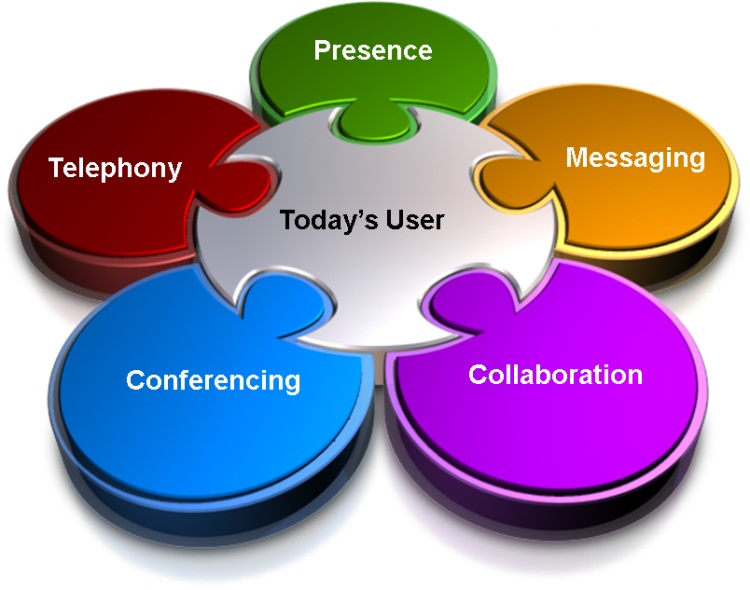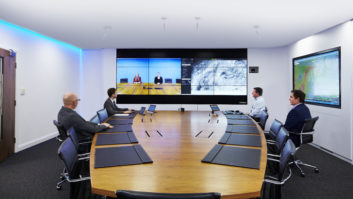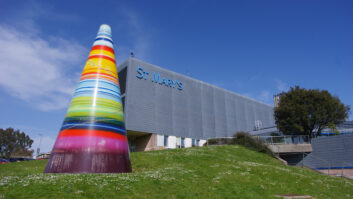
UC technology and software continue to boom, with the enterprise and education sectors demanding more and more collaborative solutions. With more exhibitors than ever featuring at ISE 2018, Rob Lane discusses UC’s success story
The rise and rise of unified communications (UC) technology and software continues unabated, driven by the demand for collaborative solutions, mainly in enterprise but also education establishments. AV integrators and UC manufacturers are at the forefront of these installations, radically changing the way people work and interact within business and education – with student expectations adding further fuel to the demand for collaborative working once they enter the workplace.
Organisations worldwide are tasking AV integrators with creating small, UC huddle spaces, positioned within open plan ‘villages’ where workers can conference with remote-working colleagues or colleagues across the globe. They can also hotdesk at a ‘village café’, and catch up with associates to exchange ideas across a multi-touch table while enjoying a latte.
It’s no surprise then that more and more traditionally experiential-leaning AV integrators are expanding their businesses into the enterprise sector – and no surprise that UC has a growing presence here at ISE. Last year saw easily the most collaboration-flavoured ISE yet, and the unified communications hall this year has even more exhibitors, with some of the biggest names in collaboration technology and solutions. There are many more companies involved with UC in some capacity exhibiting elsewhere in the RAI, of course.
Get with the programme
Those AV integrators that are yet to cotton on to the business potential of unified comms – particularly in relation to enterprise – need to wake up and smell the village café coffee fast! The continuing, and game-changing, convergence between the AV and IT industries is acting as an accelerant for the adoption of AV tech in corporations, and to a lesser extent, education. Slow-to-react AV professionals could miss out on the feeding frenzy.
AV technology was once mistrusted by IT and facilities management pros – seen as a security risk in particular – and historically corporate institutions saw AV as a bespoke add-on. It is now being specified in exactly the same way as more typically IT-friendly tech. This goes a long way to explaining enterprise’s new predilection for AV, and the continued growth of the collaboration sector, which is possibly the purest example of AV and IT tech working in concert. You’ve only got to look at the list of exhibitors at ISE this year to appreciate the influence of IT, with one global IT giant in particular exhibiting in the UC hall yet again.
Class act
In the education sector, ongoing budgetary constraints continue to bite, including post-2008-crash legacies and its resulting austerity policies, and – in the UK – foreign student applications squeezed by Brexit. However, counterintuitively, this financial squeeze may have necessitated a more commercial approach now being adopted by many institutions, particularly when it comes to AV – with unified communications technology having a big part to play.
Worsening budgetary constraints have forced higher education (HE) institutions to look at ways of monetising their real estate assets, designating more space for commercial ventures, with UC taking a front seat.
Meeting-hub room design in particular lends itself to HE, where many meeting spaces are less formal by nature, allowing students and staff to work with one another remotely. There’s also a trend towards more distributed learning environments in HE, powered by these collaborative technologies.
And let’s not forget the influence of the students themselves, who are demanding more hands-on, flexible communication-led technologies, as a result of their millennium-generation interactive tech expectations. They also have an expectation of how they foresee their forthcoming working environment – with UC front and centre – and it’s crucial that HE establishments in particular echo enterprise workspaces with their own student learning environments.
Whether powered by commercial necessity, student expectations, corporate influence on HE design and build, or a combination of the three, UC continues to proliferate in the education sector – just as it accelerates through the enterprise sector. The importance of UC for the ongoing success story that is ISE should not be underestimated either.







